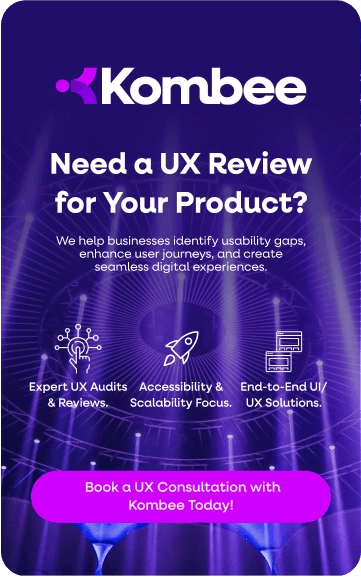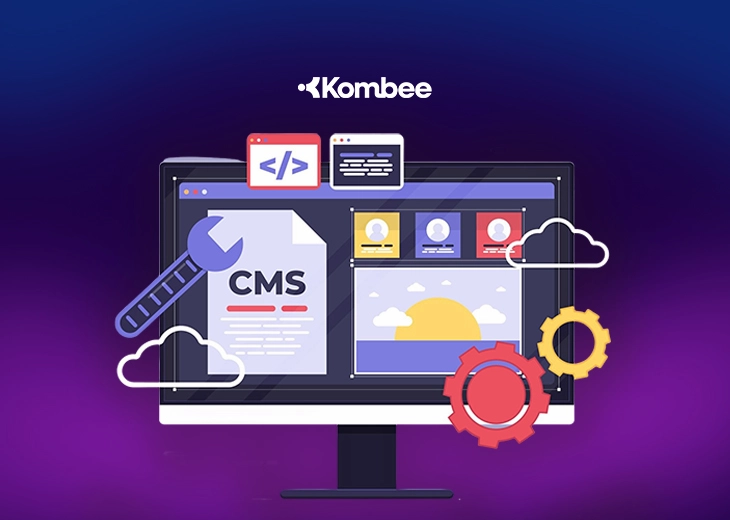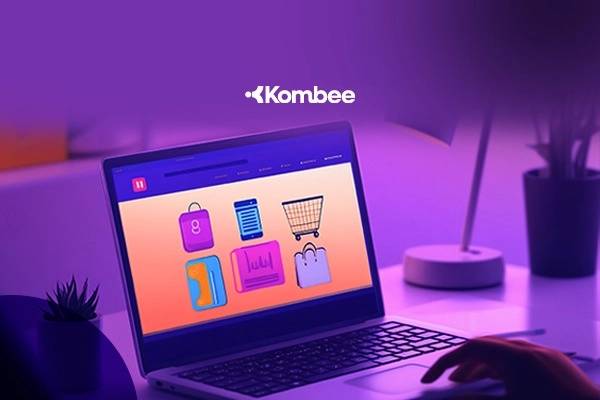Introduction
Is your current CMS holding back your digital growth? Traditional content management systems with websites, apps, and smart devices are very restrictive in these digital experience-oriented times. That is where the headless CMS comes in.
After all, 98% of businesses currently intend to use a headless CMS during the next 12 months. This signifies that businesses want more flexible solutions than traditional CMS platforms to deliver content seamlessly across multiple channels. But is a headless CMS just hype, or does it genuinely offer solutions that can benefit your business? Many businesses are now exploring the headless CMS benefits for e-commerce product content, as it helps deliver consistent, structured information across multiple digital storefronts.
Read further to understand whether a headless CMS is the right choice for your business.
What Is a Headless CMS?
A headless CMS is a kind of content management system separating the backend from the frontend. That means one creates and manages the content on the backend side, while the frontend is the view of the user who will see it. Unlike traditional CMS platforms, a headless CMS delivers content through APIs. Hence, the developer can use any frontend technology they want.
This decoupled architecture is a game-changer not only for the developers of the e-commerce websites but also for the headless CMS. It allows for delivering content onto websites, mobile apps, IoT devices, and even smartwatches from a single source.
Think of it this way: The traditional CMS is like a bakery where the bread is baked and put up in the same room. A headless CMS would be like a bakery that delivers fresh bread anywhere you need, without limitation on where it can go.
Core Competencies of Headless CMS
A. API-First Design
A headless CMS is API-first designed, meaning all content is accessed via an API. This architecture facilitates frictionless integration with any frontend technology so developers can retrieve and present content to fit their applications best. Adopting RESTful APIs or GraphQL APIs ensures that content is rapidly and efficiently delivered to the various endpoints. In a headless CMS comparison, this flexibility often stands out as a key benefit.
B. Content Modeling
A fundamental characteristic of headless CMS features is advanced content modeling capabilities. Companies can define custom content structures as per their needs to have more control over content organization and presentation. These capabilities support complex types of content and relationships with various digital assets.
C. Version Control and Workflows
Many headless CMS features provide advanced version control, such that users can track content changes over time. This functionality is essential for maintaining accuracy and consistency in published materials. More than this, customizable workflows help collaborative teams by letting them define roles, permissions, and approval processes according to their organizational needs.
Why Businesses Are Inherently Adopting Headless CMS
1. Flexibility for Developers
The developers love freedom. And a headless CMS provides just this. Whereas a conventional CMS is stuck within predefined templates, a headless CMS offers developers the opportunity to use the latest frameworks, be it React, Vue.js, or Angular.
The benefits of headless CMS include delivering a unique shopping experience without being tied to norms. The results can be light, quick, and delightful to customers.
2. Multi-Channel Content Delivery
Your audience isn't just on one platform—they're everywhere. A headless CMS allows you to "Create Once, Publish Everywhere" (COPE). Whether it's a website, mobile app, or bright display, your content stays consistent across all channels.
This is a huge advantage for businesses offering headless commerce solutions. Consistent messaging across platforms enhances user experience and boosts brand trust. The benefits of headless CMS include serving content in multiple formats, such as JSON or XML, ensuring compatibility with different devices and applications.
3. Improved Performance
Speed matters. In fact, with a headless CMS, content is served via APIs and usually delivered through Content Delivery Networks (CDNs). That results in faster load times and a smoother user experience.
For e-commerce headless CMS website developers, that means faster page loads, fewer bounces, and satisfied customers who don’t want to wait for a page to load.
4. Scalability
As your business in New Zealand grows, so does your need for robust content delivery. A headless CMS scales effortlessly. You can upgrade the backend or frontend independently.
In a headless CMS comparison, scalability is a key advantage for businesses focused on growth. For retailers, one major headless CMS benefit is that it allows product catalogs, pricing, and promotions to be managed centrally and then displayed consistently across apps, websites, and digital displays.
5. Enhanced Security
Security is the number one priority. The headless CMS splits the frontend and backend, making it less vulnerable than a combined application. You can be assured that if one side is hacked, the other remains secure.
The benefits of headless CMS extend to secure APIs that use authentication to keep your information safe.
Is Headless CMS the Right Fit for My Business in New Zealand?
Let's break it down. Here's how to know if a headless CMS aligns with your business needs.
1. Do You Need Multi-Channel Distribution?
A headless CMS can simplify your workflow if you deliver content to websites, mobile apps, or smart devices. Headless CMS developers can manage content in one place and push it everywhere. No more duplication or inconsistent messaging.
2. Is Flexibility Important to You?
Do you want your developers to leverage the latest frontend technologies? Headless CMS benefits e-commerce website developers: It gives them freedom away from outdated templates while custom-building experiences.
3. Scalability in Your Growth Roadmap?
If your business is growing, headless CMS can grow with you. You may easily upgrade systems with a scalable headless CMS through the development and migration procedure, which ensures smooth scaling with minimal or no interruptions to service.
4. Are You Performance and Security-Focused?
Fast loads and robust security are essential for delighting customers. E-commerce headless CMS website developers value how headless architecture benefits performance and data security. When considering what CMS is best for an eCommerce frontend, headless options stand out because they separate the backend from the presentation layer, giving more flexibility for custom storefronts.
Few Headless CMS Implementation Issues
It's not without its challenges, however. Here are a few implementation issues to keep in mind:
- Initial Complexity: Switching to a headless CMS is a challenging switch. You'll need good headless CMS developers.
- More Initial Cost: Headless commerce may incur higher initial costs. But, usually, the long-term return on investment makes it all worth it.
- Integration Complications: Your new headless CMS must integrate well with your current tools. Test it properly to avoid later complications.
Tip: Develop a comprehensive migration plan and work with experienced e-commerce headless CMS developers to tackle these problems smoothly.
Takeaways to Make an Informed Decision
Determining whether a headless CMS is the right choice for your business needs careful consideration of various factors. Is a headless CMS right for your business? Ask yourself the following questions:
- Do you need to distribute content across multiple channels?
- Do your developers need more flexibility?
- Does scalability matter for your business growth?
- Do you want improved performance and security?
If you answered "yes," then a headless CMS could be your solution.
Ready to Go Headless CMS?
Switching to a headless CMS can transform your content strategy and future-proof your business in New Zealand. Choosing the best e-commerce headless CMS depends on your specific goals: some platforms are optimized for speed, others for omnichannel delivery, and some for developer flexibility.
Kombee's team of e-commerce website developers, headless CMS development, and migration experts can help you implement a headless CMS that fits your goals.
Don't wait—join the future of content management today. Contact Kombee to learn how a headless CMS can take your business beyond the hype!
Frequently Asked Questions
Q1. What are the key benefits of adopting a headless CMS for businesses?
A headless CMS provides flexibility for developers, enables multi-channel content delivery, improves performance, enhances security, and scales easily with growing business needs.
Q2. Is a headless CMS suitable for small and medium-sized businesses?
Yes. While headless CMS platforms are often adopted by large enterprises, SMEs can also benefit from faster performance, omnichannel reach, and future-proof scalability, provided they have the right technical support.
Q3. What challenges should businesses expect when implementing a headless CMS?
The main challenges include higher initial costs, integration complexities, and the need for skilled developers. However, with a solid migration plan and expert guidance, these challenges can be effectively managed.
Q4. How do headless CMS benefits apply specifically to e-commerce product content?
The headless CMS benefits for e-commerce product content include structured product information management, faster updates across multiple storefronts, and improved customer experience consistency. By using the best e-commerce headless CMS, retailers can ensure accurate product details, pricing, and promotions are displayed seamlessly across all digital channels.








